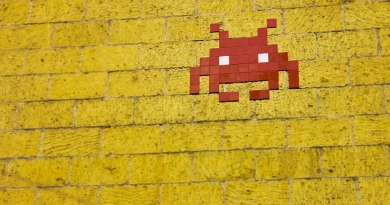How AI is Revolutionizing Game Development
For decades, the role of artificial intelligence in gaming was simple and predictable. It was the “A” in the “AI” that made enemies patrol in a pattern or a computer-controlled opponent in a sports game react to your moves. But the generative AI explosion has completely changed the landscape.
AI is no longer just a feature in games; it is becoming a fundamental partner in the creation of games. Developers are now using a new suite of powerful AI tools to revolutionize every single stage of the development pipeline, from initial concept to final testing. This shift is allowing studios to build bigger, more dynamic worlds faster than ever before.
Here’s a look at the key ways AI is changing how our favorite games are made.
1. The AI Concept Artist & World Builder
The process of creating the look and feel of a game world used to start with months of manual work by concept artists.
- How AI Helps: Now, with generative AI image models like Midjourney and Stable Diffusion, a development team can generate hundreds of high-quality concept images for characters, environments, and props in a single afternoon. They can instantly visualize a “cyberpunk city in a rainstorm” or “an enchanted forest of glowing mushrooms.” This isn’t replacing the human artist; it’s supercharging their brainstorming process. Furthermore, AI tools are now being used to generate textures, 3D model outlines, and even rough level layouts, dramatically speeding up the asset creation pipeline.
2. Smarter, More Dynamic NPCs
For years, Non-Player Characters (NPCs) in games have been robotic, repeating the same few lines of scripted dialogue. Generative AI is finally making them feel alive.
- How AI Helps: Technologies like Nvidia’s “ACE” (Avatar Cloud Engine) use large language models (LLMs) to power NPCs. This allows a player to speak to a character using their own microphone, and the NPC will have a unique, unscripted, and context-aware conversation back. Imagine asking a shopkeeper about local rumors and getting a dynamic, AI-generated response instead of a pre-written line of text. This will create a new level of immersion and emergent gameplay that was previously impossible.
3. AI as a Development Co-Pilot
Game development involves writing millions of lines of code and creating thousands of animations—a complex and labor-intensive process.
- How AI Helps: For programmers, AI tools like GitHub Copilot can now write boilerplate code, suggest solutions for complex problems, and help debug errors, acting as a tireless programming partner. For animators, AI can automate the painstaking process of “in-betweening”—creating the smooth frames of animation between key poses. It can also help generate variations in character movements to make game worlds feel less repetitive.
4. The Infinite Game Tester: AI for QA
Before a game is released, it must be tested for thousands of hours by Quality Assurance (QA) teams to find bugs, glitches, and balance issues.
- How AI Helps: Developers can now unleash thousands of AI “bots” into their game. These bots can be trained to play the game in countless different ways, exploring every corner of the map and testing every possible combination of abilities. They can play the game 24/7, flagging bugs and generating performance data far faster than a human team ever could. This allows developers to identify and fix problems more efficiently, leading to a more polished final product.
The integration of AI into game development is not about removing human creativity; it’s about augmenting it. By automating the most repetitive and time-consuming tasks, AI is freeing up developers to focus on what really matters: building innovative gameplay, telling compelling stories, and creating the breathtaking worlds that we love to get lost in.




